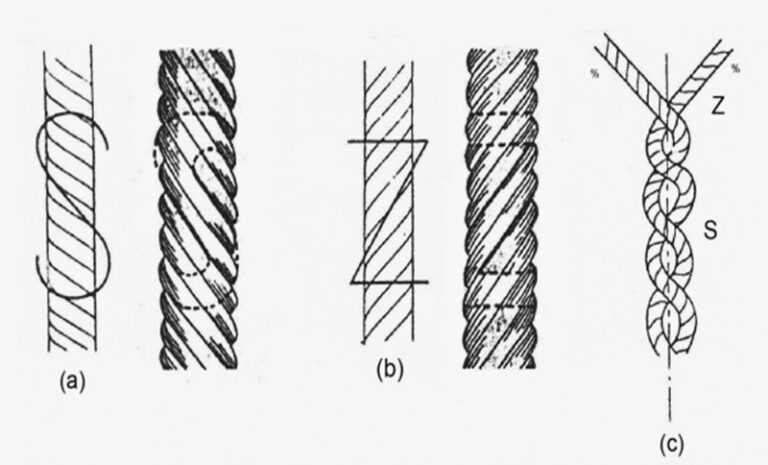For the smooth working of your manufacturing process, selecting the correct twist of the industrial sewing thread used in your application is important. This makes it necessary for one to know the difference between left twist and right twist industrial sewing threads.
Before understanding twist and the correct application for each type, it is essential to know about the overview of the thread manufacturing process.
The process starts with either short fibres or continuous filaments; these fibres are twisted together to produce fine yarns. This is known as “single twist“, the thread gets its flexibility and strength from it. A reverse twist is applied when one needs to balance threads with two or more plies, or individual threads that are combined to make the finished thread. If this reverse twist is not applied, the yarn will split into individual plies when used in sewing.


An additional twist is applied to the thread during the sewing process when it passes through the machine. Sewing machines generally use a single needle that allows threads with a left twist, or Z-twist to pass through it with ease. The sewing process tends to increase the twist of this thread.


Using threads with a right twist, or S-twist, in single-needle machines can actually untwist these threads during the sewing process. The resulting thread is a jumble, which halts the manufacturing process. S-twist threads are best suited for use in double-needle machines which are made specifically for use with right twist threads.
The direction of a thread’s twist has no impact on its strength, but it can seriously affect the thread’s performance when it is used on an unsuitable machine. It is therefore advisable to choose a thread that is designed and engineered for use on particular machines.


Devika Fibres is one of the leading Polyester exporters in India with its expertise in Polyester DTY Yarn, andAir Textured Yarn. For bulk purchase and orders of polyester yarn, connect with us today.
